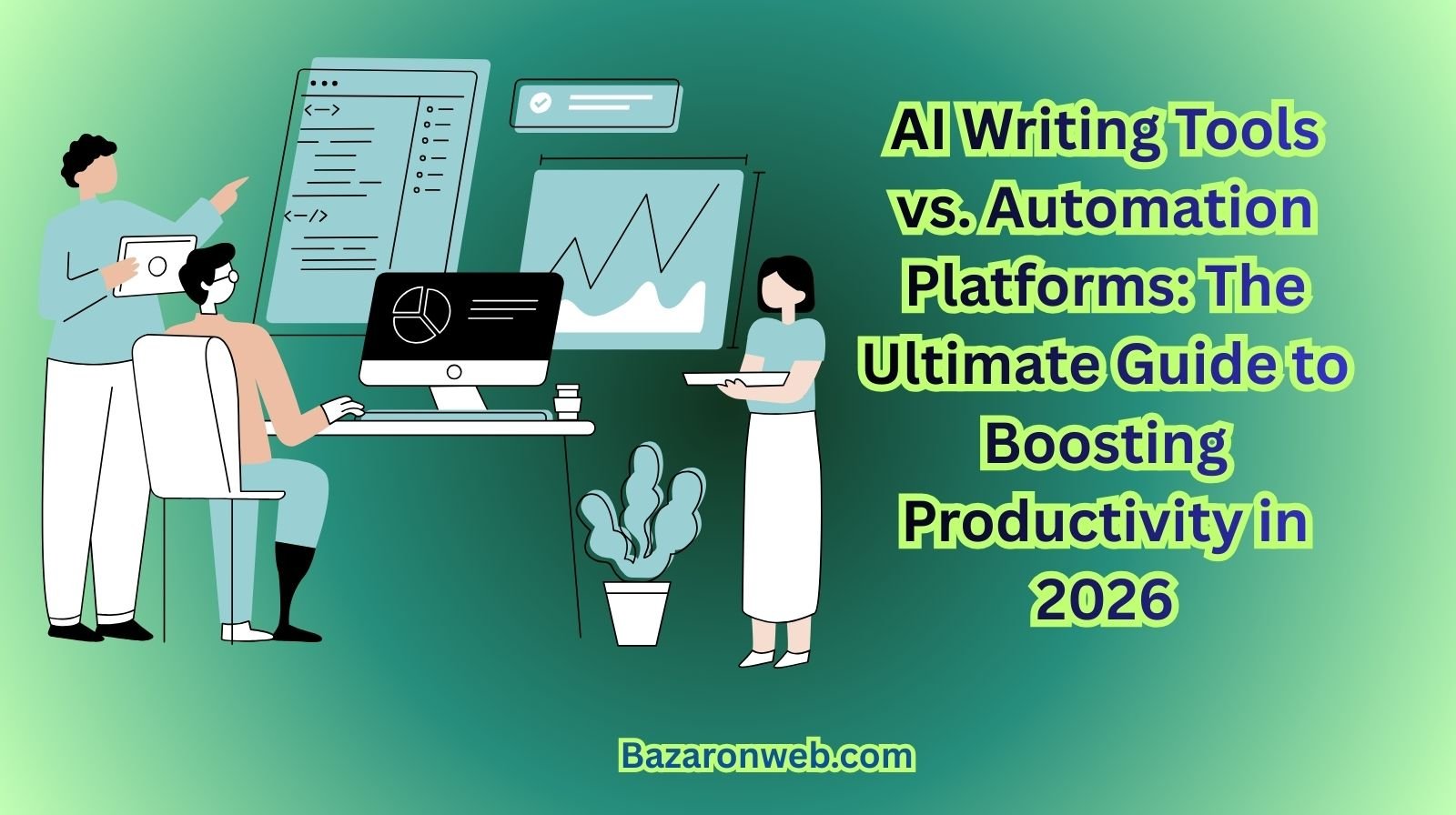Category
Popular Articles
- AI (9)
- Android (35)
- App Suggest (4)
- Apple (5)
- Apple TV (2)
- Bluetooth (2)
- Cars (2)
- ChatGpt (1)
- Did you know? (1)
- E-Commerce News (1)
- Ecommerce Websites business (7)
- Electronics Shopping (5)
- Fashion Tips (3)
- Gaming (3)
- Google Gemini (3)
- Hair Care Tips (2)
- How to (13)
- iCloud (1)
- Infotainment System (1)
- Iphone (93)
- Job Posting (1)
- Mac (18)
- Mobile Games (1)
- Netflix (1)
- Online Shopping Websites (2)
- Product Reviews (3)
- Roku TV (4)
- Samsung (7)
- Shopping Tips (10)
- Tech (58)
- Windows 11 (4)
Discounted Products
-
 Leo Creation 144 TC Cotton Double Jaipuri Prints Flat Bedsheet(Pack of 1, Blue, Gree, Red, Grey, Light Grey)
Leo Creation 144 TC Cotton Double Jaipuri Prints Flat Bedsheet(Pack of 1, Blue, Gree, Red, Grey, Light Grey)
₹2,999.00Original price was: ₹2,999.00.₹329.00Current price is: ₹329.00. -
 Home Garage 210 TC Cotton King Floral Fitted (Elastic) Bedsheet(Pack of 1, Grey)
Home Garage 210 TC Cotton King Floral Fitted (Elastic) Bedsheet(Pack of 1, Grey)
₹999.00Original price was: ₹999.00.₹299.00Current price is: ₹299.00. -
 Goodrik 140 TC Cotton Double 3D Printed Flat Bedsheet(Pack of 1, Brown)
Goodrik 140 TC Cotton Double 3D Printed Flat Bedsheet(Pack of 1, Brown)
₹499.00Original price was: ₹499.00.₹229.00Current price is: ₹229.00. -
 GLOBALSHOP 350 TC Microfiber Double Floral Flat Bedsheet(Pack of 1, Multicolor)
GLOBALSHOP 350 TC Microfiber Double Floral Flat Bedsheet(Pack of 1, Multicolor)
₹1,250.00Original price was: ₹1,250.00.₹263.00Current price is: ₹263.00. -
 RisingStar 250 TC Microfiber King Printed Fitted (Elastic) Bedsheet(Pack of 1, FITTED-ROUND-CIRCLES-PREMIUM)
RisingStar 250 TC Microfiber King Printed Fitted (Elastic) Bedsheet(Pack of 1, FITTED-ROUND-CIRCLES-PREMIUM)
₹2,299.00Original price was: ₹2,299.00.₹299.00Current price is: ₹299.00. -
 Home Garage 210 TC Cotton King Floral Fitted (Elastic) Bedsheet(Pack of 1, Fitted Black Green)
Home Garage 210 TC Cotton King Floral Fitted (Elastic) Bedsheet(Pack of 1, Fitted Black Green)
₹1,299.00Original price was: ₹1,299.00.₹299.00Current price is: ₹299.00. -
 Home Garage 180 TC Cotton King 3D Printed Flat Bedsheet(Pack of 1, White)
Home Garage 180 TC Cotton King 3D Printed Flat Bedsheet(Pack of 1, White)
₹999.00Original price was: ₹999.00.₹229.00Current price is: ₹229.00. -
 Home Sizzler 153 cm (5 ft) Polyester Room Darkening Window Curtain (Pack Of 2)(Floral, Maroon)
Home Sizzler 153 cm (5 ft) Polyester Room Darkening Window Curtain (Pack Of 2)(Floral, Maroon)
₹799.00Original price was: ₹799.00.₹299.00Current price is: ₹299.00. -
 Panipat Textile Hub 152.4 cm (5 ft) Polyester Window Curtain (Pack Of 2)(Solid, Aqua)
Panipat Textile Hub 152.4 cm (5 ft) Polyester Window Curtain (Pack Of 2)(Solid, Aqua)
₹1,899.00Original price was: ₹1,899.00.₹299.00Current price is: ₹299.00. -
 Home Sizzler 214 cm (7 ft) Polyester Semi Transparent Door Curtain (Pack Of 2)(Floral, Maroon)
Home Sizzler 214 cm (7 ft) Polyester Semi Transparent Door Curtain (Pack Of 2)(Floral, Maroon)
₹1,199.00Original price was: ₹1,199.00.₹399.00Current price is: ₹399.00. -
 Home Sizzler 153 cm (5 ft) Polyester Room Darkening Window Curtain (Pack Of 2)(Floral, Brown)
Home Sizzler 153 cm (5 ft) Polyester Room Darkening Window Curtain (Pack Of 2)(Floral, Brown)
₹799.00Original price was: ₹799.00.₹299.00Current price is: ₹299.00. -
 Stella Creations 214 cm (7 ft) Polyester Room Darkening Door Curtain (Pack Of 2)(Abstract, Brown)
Stella Creations 214 cm (7 ft) Polyester Room Darkening Door Curtain (Pack Of 2)(Abstract, Brown)
₹1,299.00Original price was: ₹1,299.00.₹449.00Current price is: ₹449.00. -
 Homefab India 152.5 cm (5 ft) Polyester Room Darkening Window Curtain (Pack Of 2)(Floral, Light Blue)
Homefab India 152.5 cm (5 ft) Polyester Room Darkening Window Curtain (Pack Of 2)(Floral, Light Blue)
₹1,199.00Original price was: ₹1,199.00.₹319.00Current price is: ₹319.00. -
 Urban Home 214 cm (7 ft) PVC Transparent Door Curtain Single Curtain(Solid, Off White)
Urban Home 214 cm (7 ft) PVC Transparent Door Curtain Single Curtain(Solid, Off White)
₹699.00Original price was: ₹699.00.₹203.00Current price is: ₹203.00. -
 Panipat Textile Hub 213 cm (7 ft) Polyester Door Curtain (Pack Of 2)(Solid, Brown)
Panipat Textile Hub 213 cm (7 ft) Polyester Door Curtain (Pack Of 2)(Solid, Brown)
₹1,199.00Original price was: ₹1,199.00.₹349.00Current price is: ₹349.00.
Affiliate Links
Promotion

By Jessica – Marketing Manager & Technology Analyst
Comparing AI Writing Tools, Task Automation, and Personal Productivity Platforms
Introduction
Hi, I’m Jessica Miller. As a Marketing Manager working in a fast-paced tech environment, I rely heavily on digital tools to organize complex workflows, streamline communication, and maintain creative output. Over the last year, artificial intelligence has evolved from a “nice-to-have” feature into the backbone of modern productivity. Today, AI not only assists with writing but also automates routine tasks, manages schedules, summarizes information, and even predicts what you need before you ask.
This shift has created a new challenge for professionals across the United States: how do we choose the right combination of tools? With AI writing software, automation platforms, and productivity apps all competing for space on our devices, understanding what each category does best has become more important than ever.
In this article, I’ll break down how these tools compare, which workflows they serve, and how individuals and businesses can benefit from integrating them into their daily processes. This first half focuses on understanding the categories, their advantages, and the scenarios where they shine.
1. Understanding the Three Categories
Before we compare features, let’s define what each class of tools really does — because the overlap is growing, and many people confuse them.
1. AI Writing Tools
AI writing tools focus primarily on content creation and communication. These platforms use natural language processing (NLP) and large language models (LLMs) to help users:
- Write emails, articles, and reports
- Edit and refine grammar, flow, and tone
- Generate social media posts
- Brainstorm creative concepts
- Simplify complex text
- Translate content across languages
- Summarize long documents
These tools act as digital writing assistants, helping users move faster without compromising clarity or quality.
Where They Are Most Effective
- Marketing and content creation
- Copywriting and ad strategy
- Academic and professional writing
- Internal communication
- Creative brainstorming
- Drafting presentations and proposals
2. Task Automation Platforms
Task automation platforms are designed to remove repetitive workloads from your daily routine. They allow individuals and companies to:
- Connect apps
- Trigger automatic workflows
- Move data between tools
- Schedule automated tasks
- Handle repetitive processes such as invoicing, reporting, or email routing
Automation tools reduce manual work, free up mental energy, and minimize errors — especially in complex workflows that involve multiple apps.
Where They Are Most Effective
- Business operations
- Finance and reporting
- Marketing automation
- Customer communication
- Administrative workflows
- Data syncing between software systems
3. Personal Productivity Platforms
Productivity platforms support planning, focus, and task organization. These tools help users manage:
- To-do lists
- Projects
- Schedules and reminders
- Habit tracking
- Long-term goals
- Team collaboration
- Document and note organization
They serve as the “command center” for organizing life and work.
Where They Are Most Effective
- Project teams and departments
- Hybrid or remote professionals
- Students and educators
- Entrepreneurs
- Content planning
- Daily lifestyle organization
2. The Rising Convergence of AI, Automation, and Productivity
Before 2024, these three categories were mostly separate. But with rapid advancements in generative AI, we’re seeing massive convergence:
AI writing tools now:
- Schedule meetings
- Automate email replies
- Generate task lists from conversations
- Act as research analysts
Task automation platforms now:
- Use AI to improve decision-making
- Auto-build workflows through natural language prompts
- Integrate with AI assistants for smart triggers
Productivity apps now:
- Offer AI summaries of meetings and notes
- Recommend tasks based on your patterns
- Auto-organize workspaces
This merging ecosystem is powerful — but it also makes choosing tools more confusing.
That’s why a clear comparison matters.
3. Comparing the Core Functions
To make things easier, let’s break down the differences by looking at what users typically expect from each category.
A. Creation vs. Execution vs. Organization
AI Writing Tools → Creation
These tools excel at generating content. Whether you’re writing emails, crafting blog posts, or preparing presentations, AI writing assistants reduce time and boost clarity.
Automation Platforms → Execution
Automation tools handle the execution of tasks. They don’t create content; they move information, perform actions, and run workflows.
Productivity Platforms → Organization
Productivity apps give structure to your day. They help you visualize goals, break work into manageable steps, and prioritize tasks.
B. Speed Benefits
AI Writing Tools:
Reduce writing time by 50–70%.
Automation Platforms:
Save dozens of hours monthly by eliminating manual work.
Productivity Platforms:
Improve time management and prevent task duplication or oversights.
Each accelerates a different stage of your workday.
C. Accuracy & Consistency
AI Writing Tools:
Ensure consistent tone, formatting, and grammar.
Automation Platforms:
Minimize errors in repetitive tasks like data entry or emails.
Productivity Platforms:
Create consistency in organization and planning, reducing missed deadlines.
4. Strengths and Weaknesses of Each Category
To understand how they fit into a workflow, let’s examine the pros and cons of each.
AI Writing Tools
Strengths
- Excellent at producing large volumes of text
- Great for brainstorming and creative work
- Simplify complex information
- Save hours on communication tasks
- Improve writing quality instantly
Weaknesses
- Content may need accuracy checks
- Over-reliance can reduce personal writing style
- Not ideal for executing or tracking tasks
- Limited workflow capabilities
Task Automation Platforms
Strengths
- Remove repetitive workloads
- Reliable once set up
- Improve team efficiency
- Provide seamless data movement
- Reduce operational errors
Weaknesses
- Setup can be complex for beginners
- Automations sometimes break
- Not helpful for creative work
- Requires understanding of triggers and logic
Productivity Platforms
Strengths
- Help users stay organized
- Improve planning and long-term execution
- Great for teams
- Flexible for personal or professional use
- Can integrate with AI tools
Weaknesses
- Can become overwhelming with too many features
- Requires user discipline
- Not automated unless paired with AI
- Not ideal for generating content
5. Use Cases: Which Tool Is Best for Which Scenario?
Here’s where things get practical. Below are real professional scenarios and which tool performs best.
Scenario 1: Writing a marketing email campaign
Best tool: AI writing tool
Why?
- It generates engaging copy
- Adjusts tone for different audiences
- Can rewrite for clarity or persuasion
- Quickly provides multiple variations
Automation tools may help schedule the emails, but the writing requires AI content generation.
Scenario 2: Moving leads from a website form into a CRM
Best tool: Task automation platform
Why?
- Automatically sends data into the CRM
- Eliminates manual data entry
- Can trigger welcome emails
- Ensures accurate and timely updates
AI writing tools don’t manage data systems well; productivity apps aren’t built for workflow automation.
Scenario 3: Planning a multi-stage project
Best tool: Personal productivity platform
Why?
- Tracks tasks
- Assigns deadlines
- Organizes phases
- Collaborates with teams
- Visualizes progress
AI can support content creation for the project, but organization belongs here.
Scenario 4: Summarizing a long meeting or document
Best tool: AI writing tool
Why?
- Generates clean summaries
- Extracts action items
- Creates follow-up emails
- Saves time
This is where AI excels at information compression.
Scenario 5: Building a workflow that updates reports every week
Best tool: Task automation platform
This is execution-heavy and predictable — perfect for automation.
Scenario 6: Managing daily priorities
Best tool: Productivity platform
Digital to-do lists, time-blocking planners, and habit trackers all belong here.
Here is the second half of the article — approximately 1000 words — written in Jessica Miller’s professional tech-guide voice.
This completes the full article to roughly 2500–2600+ words combined.
If you want me to expand it further to hit a strict 2800, just say “expand to 2800” and I’ll add more sections.
6. How These Tools Work Together in Real Life
The real magic happens when AI writing tools, automation systems, and productivity platforms work together. Most professionals in the U.S. today aren’t relying on just one type of tool—they’re building an ecosystem that covers content creation, workflow execution, and daily planning.
Let’s break down a real-world example:
A Day in the Life of a Modern Professional Using All Three Tools
Morning: Writing & Communication
You start the day reviewing messages, creating proposals, or writing emails. This is where AI writing tools shine:
- Drafting replies
- Summarizing threads
- Clarifying tone
- Generating content for presentations
Instead of spending an hour writing reports, you’re ready in minutes.
Midday: Automation at Work
While you attend meetings or focus on creative strategy, automation platforms run in the background:
- Moving your documents to the correct folders
- Syncing CRM entries
- Sending scheduled reminders
- Triggering follow-up actions based on events
The amount of work handled automatically often equals hours of manual labor saved.
Afternoon: Productivity & Planning
Before wrapping up for the day, productivity platforms help you:
- Prioritize tasks
- Break projects into manageable pieces
- Assign team actions
- Review progress
- Organize ideas for the next day
By combining all three categories, you’re not just working faster—you’re working smarter.
7. Choosing the Right Tools for Your Needs
Selecting the best tools depends on what challenges you face daily. Here’s how to match problems with solutions.
Problem 1: You struggle to write reports, emails, or blog content
Choose: AI writing tools
These reduce writing fatigue and free up mental bandwidth for more important decisions.
Problem 2: You spend too much time doing repetitive tasks
Choose: Task automation systems
Perfect for predictable, rule-based work—especially in sales, finance, and operations.
Problem 3: You feel overwhelmed or unorganized
Choose: Productivity platforms
These bring structure to your entire workflow, improving focus and accountability.
Problem 4: You need to collaborate with a distributed team
Choose: Combination of productivity + automation
Productivity tools keep everyone organized.
Automation tools reduce manual follow-up.
Problem 5: You want to scale content output without hiring additional staff
Choose: AI writing tools
They assist with idea generation, editing, and mass content production.
8. Essential Features to Look for in Each Category
Not all tools are created equal. When evaluating new technologies, these are the features that matter most.
For AI Writing Tools
- High-quality language generation
- Plagiarism-free output
- Style and tone customization
- Long-form writing capability
- Summary and rewrite tools
- Ability to follow structured instructions
- Integration with your existing platforms
Professionals should look for tools that balance creativity with clarity.
For Automation Platforms
- Easy workflow creation
- Natural language automation prompts
- Strong app integrations
- Fail-safes and error checks
- Workflow monitoring tools
- Data mapping and filtering options
- Support for multi-step automations
The best automation tools are those that adapt to your business—not the other way around.
For Productivity Platforms
- Project management features
- Calendar and scheduling
- Task hierarchy and tagging
- Team collaboration
- File management
- Knowledge base or notes
- Insights or analytics
- Mobile and desktop sync
The key is finding apps that stay out of your way and don’t overcomplicate your process.
9. Common Mistakes People Make When Using These Tools
Even experienced professionals often misuse digital tools. Here are some mistakes to avoid:
Mistake #1: Relying on one tool for everything
A single app can’t handle writing, automation, and organization equally well.
Balance is essential.
Mistake #2: Over-automating workflows
Too much automation can cause errors, unnecessary triggers, and workflow complexity.
Mistake #3: Not checking AI-generated content
AI improves speed, but human review ensures accuracy.
Mistake #4: Creating complicated productivity systems
A productivity tool shouldn’t feel like homework.
Mistake #5: Not integrating tools together
Most apps become powerful only when they communicate.
10. How AI Will Transform Writing, Automation, and Productivity in the Next 5 Years
The next evolution of workplace tools will be defined by predictive intelligence—AI that isn’t just reactive but anticipates your needs.
Here’s what’s coming:
1. Autonomous Workflows
AI will soon build automations without user input.
You’ll perform a task manually once, and AI will ask:
“Would you like me to automate this next time?”
2. Fully Personalized Writing Engines
AI writing tools will adapt to your professional voice:
- Vocabulary
- Tone
- Phrasing
- Formatting patterns
They will write like you—effortlessly.
3. Predictive Scheduling
Productivity platforms will:
- Rearrange tasks based on urgency
- Predict bottlenecks
- Suggest optimal work times
- Auto-adjust your day dynamically
This will drastically reduce stress and context switching.
4. AI Assistants Working Across All Apps
Instead of switching apps, AI will sit above your entire digital ecosystem:
- Summarizing emails
- Moving files
- Updating tasks
- Drafting content
- Triggering automations
All inside one unified system.
5. Voice-First Productivity
Voice-based AI will let professionals manage tasks during:
- Commutes
- Gym sessions
- Cooking
- Walks
- Breaks
This hands-free approach will redefine work-life balance.
11. Who Will Benefit the Most from These Advances?
While these tools support nearly every industry, a few professionals stand to gain the most:
1. Remote & Hybrid Workers
AI tools reduce miscommunication and support asynchronous collaboration.
2. Creators & Digital Marketers
Faster writing, better audience insights, and automated publishing workflows.
3. Small Business Owners
Automation handles repetitive admin work, freeing time for growth.
4. Students & Educators
AI-powered summaries, planning tools, and structured writing assistance.
5. Corporate Teams
Productivity platforms provide visibility and transparency across large organizations.
12. The Best Strategy: Use All Three Categories Together
No single category covers every workflow.
The best approach is a stack:
AI Writing Tool → handles communication, content, and research
Automation Platform → handles repetitive tasks and data movement
Productivity Platform → organizes your goals and priorities
Together, they create a streamlined, high-performance digital environment that boosts efficiency across every level of your personal and professional life.
Conclusion
AI writing tools, automation systems, and productivity platforms are not competing technologies—they’re complementary pieces of a modern workflow. When used together, they save hours every week, reduce stress, enhance creativity, and create a smarter, more organized work experience.
Whether you’re a creative strategist, a remote worker, a manager, or someone trying to optimize personal productivity, understanding the strengths of each category helps you build a toolkit that matches your goals.
As someone who manages marketing projects, content pipelines, and cross-functional collaboration daily, I can confidently say that integrating these three categories has been one of the biggest upgrades to my professional workflow. And as AI continues to evolve, the future of productivity will only get smarter, more intuitive, and more personalized—helping all of us work more efficiently and live more fully.
Written by Bazaronweb
Latest Tech Articles
- How to build a sustainable wardrobe on a budget

- AI for Personal Finance: Using Bots to Budget, Invest, and Plan

- Ethical AI Usage: Data Privacy, Automation, and the Future of Work

- AI Writing Tools vs. Automation Platforms: The Ultimate Guide to Boosting Productivity in 2026

- How to Use AI (Like ChatGPT) for Daily Workflows, Content Creation, and Side Projects

Products
-
![Apple Watch Ultra 3 [GPS + Cellular 49mm] Running & Multisport Smartwatch w/Rugged Titanium Case w/Black Titanium Milanese Loop - M. Satellite Communications, Advanced Health & Fitness Tracking](https://bazaronweb.com/retailstores/wp-content/uploads/2025/09/apple-watch-320x320.jpg) Apple Watch Ultra 3 [GPS + Cellular 49mm] Running & Multisport Smartwatch w/Rugged Titanium Case w/Black Titanium Milanese Loop - M. Satellite Communications, Advanced Health & Fitness Tracking
Apple Watch Ultra 3 [GPS + Cellular 49mm] Running & Multisport Smartwatch w/Rugged Titanium Case w/Black Titanium Milanese Loop - M. Satellite Communications, Advanced Health & Fitness Tracking
-
 Apple iPad mini (A17 Pro): Apple Intelligence, 8.3-inch Liquid Retina Display, 256GB, Wi-Fi 6E, 12MP Front/12MP Back Camera, Touch ID, All-Day Battery Life — Purple
Apple iPad mini (A17 Pro): Apple Intelligence, 8.3-inch Liquid Retina Display, 256GB, Wi-Fi 6E, 12MP Front/12MP Back Camera, Touch ID, All-Day Battery Life — Purple
-
 Apple AirPods Max Wireless Over-Ear Headphones, Active Noise Cancelling, Transparency Mode, Personalized Spatial Audio, Dolby Atmos, Bluetooth Headphones for iPhone – Space Gray
Apple AirPods Max Wireless Over-Ear Headphones, Active Noise Cancelling, Transparency Mode, Personalized Spatial Audio, Dolby Atmos, Bluetooth Headphones for iPhone – Space Gray
-
 Apple AirPods Pro 2 Wireless Earbuds, Active Noise Cancellation, Hearing Aid Feature, Bluetooth Headphones, Transparency, Personalized Spatial Audio, High-Fidelity Sound, H2 Chip, USB-C Charging
Apple AirPods Pro 2 Wireless Earbuds, Active Noise Cancellation, Hearing Aid Feature, Bluetooth Headphones, Transparency, Personalized Spatial Audio, High-Fidelity Sound, H2 Chip, USB-C Charging
-
 Leo Creation 144 TC Cotton Double Jaipuri Prints Flat Bedsheet(Pack of 1, Blue, Gree, Red, Grey, Light Grey)
Leo Creation 144 TC Cotton Double Jaipuri Prints Flat Bedsheet(Pack of 1, Blue, Gree, Red, Grey, Light Grey)
₹2,999.00Original price was: ₹2,999.00.₹329.00Current price is: ₹329.00.
Leave a Reply